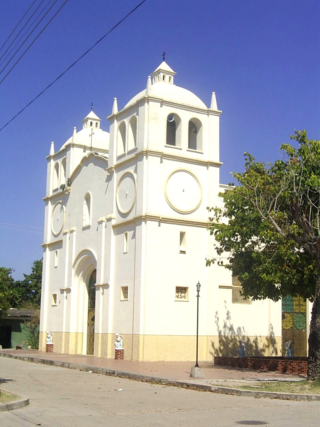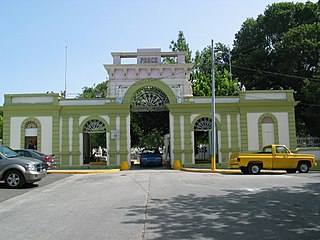Related Research Articles

Salamanca is a province of western Spain, in the western part of the autonomous community of Castile and León. It is bordered by the provinces of Zamora, Valladolid, Ávila, and Cáceres, and on the west by Portugal. It has an area of 12,349 km2 and in 2018 had a population of 331,473 people. It is divided into 362 municipalities, 11 comarcas, 32 mancomunidades and five judicial districts. Of the 362 municipalities, more than half are villages with fewer than 300 people.

Cartago is a city in southwestern Colombia, about 187 miles (301 km) west of Bogotá. It is in the extreme northern portion of the Valle del Cauca. It is located very close to the city of Pereira, Risaralda about a 20-minute drive. It is the sixth largest city in Valle after Cali, Palmira, Buenaventura, Tuluá and Jamundí. Per the 2018 Colombian census, Cartago's population was 142,902.

Ramón María del Valle-Inclán y de la Peña was a Spanish dramatist, novelist, and member of the Spanish Generation of 98. His work was considered radical in its subversion of the traditional Spanish theatre in the early 20th century. He influenced later generations of Spanish dramatists and is honored on National Theatre Day with a statue in Madrid.

El ministro y yo is a 1976 Mexican film directed by Miguel M. Delgado and starring Cantinflas, Chela Castro, Lucía Méndez and Ángel Garasa. It is the last film in which Cantinflas acted alongside Garasa.

Chiriguaná is a city and municipality in the Department of Cesar, Colombia.

Antonio Castro Leal was a Mexican diplomat and intellectual.

The Roman Catholic Metropolitan Archdiocese of Caracas is an ecclesiastical territory of the Roman Catholic Church in Venezuela. It was founded as the Diocese of Caracas on June 20, 1637, and was later elevated to the rank of a metropolitan see on November 27, 1803.

Tubilla del Agua is a village and municipality located in the province of Burgos, Castile and León, Spain. According to the 2004 census (INE), the municipality has a population of 209 inhabitants. The climate is relatively cool in the summer and cold in the winter.

Marisol is a Mexican telenovela produced by Juan Osorio for Televisa in 1996. Telenovela is a remake of the 1977 Mexican telenovela Marcha nupcial. Famous and beloved Enrique Álvarez Félix died after he finished his work in Marisol.
The royal governor of Panama ruled over the Spanish colonial administrative district known first as the colony of Darién and later as the colony of Castilla de Oro, which in 1529 was renamed Panamá. This district was subordinated to the Viceroyalty of New Granada on August 20, 1739. There were 113 such governors or presidents during the Spanish conquest and the later periods of Spanish-centered colonialism.

Fernando Díaz de Haro was a Spanish noble of the House of Haro. He was the second born son of Diego López V de Haro, the Lord of Biscay, and his wife, the infanta Violante de Castilla y Aragón, daughter of Alfonso X of Castile. Fernando became lord of Orduña and Balmaseda in 1322, after the death of his brother, Lope Díaz IV de Haro who died without leaving any descendants.
Maria of Portugal was a Portuguese royal, daughter of Infante Afonso of Portugal and his wife Violante Manuel.

Cementerio Civil de Ponce, a.k.a., Cementerio Municipal de Ponce, is a historic burial ground in Ponce, Puerto Rico. It was founded in 1901. It was designed by Manuel V. Domenech. Some of the people buried at Cementerio Civil include Ruth Fernández, Isabel la Negra and Héctor Lavoe. It is believed to be the largest cemetery in Puerto Rico.
El Castillón is an archaeological site located in the Spanish hamlet of Santa Eulalia de Tábara, in the municipality of Moreruela de Tábara, province of Zamora, region of Castile and León on the Spanish mainland.
Events in the year 1970 in Mexico.
Events in the year 1969 in Mexico.
The Loving Ones is a 1979 Mexican comedy film directed by Rafael Portillo.
Víctor Manuel Mendoza (1913–1995) was a Mexican film actor.
El Globo was a Spanish daily newspaper which was in circulation between 1875 and 1932 in Madrid, Spain. Its subtitle was diario ilustrado. It was among the influential publications of the period during which it existed.
References
- ↑ "Perfil: Dip. Manuel Castro y del Valle, LVIII Legislatura". Sistema de Información Legislativa (SIL). SEGOB . Retrieved 20 March 2015.